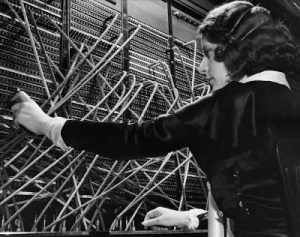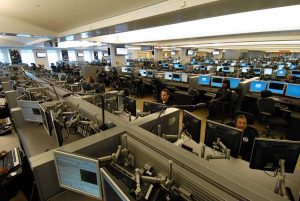911 system
 Whether you have called 911 or not, everyone knows what 911 is, and that calling that number will bring immediate help. If you have ever had to use the service, you know how vital it is, but did you know how it got started? Prior to 1968, there was no 911 system in the United States, or really anything like it. If people had an emergency, they dialed “0” for the operator. Of course, the operator was dialed for many other things too, so it was not always the fastest way to get help in an emergency. The Federal Communications Commission (FCC) knew that things had to change.
Whether you have called 911 or not, everyone knows what 911 is, and that calling that number will bring immediate help. If you have ever had to use the service, you know how vital it is, but did you know how it got started? Prior to 1968, there was no 911 system in the United States, or really anything like it. If people had an emergency, they dialed “0” for the operator. Of course, the operator was dialed for many other things too, so it was not always the fastest way to get help in an emergency. The Federal Communications Commission (FCC) knew that things had to change.
They wanted a number that would be easy to remember, and one that had never been used before…like 411 for information. Choosing 911 as the universal emergency number was not an random selection, but it wasn’t a difficult one either. In 1967, the FCC met with AT&T to establish such an emergency number. They wanted a number that was short and easy to remember, but most importantly, they also needed it to be a unique number, and since 911 had never been designated for an office code, area code or service code, that was the number they chose. Still, the system did not start out at the national level.
On February 16, 1968, Alabama Senator Rankin Fite made the first 911 call in the United States in Haleyville, Alabama. The Alabama Telephone Company carried the call. A week later in Nome, Alaska, the 911 system was implemented there. In 1973, the White House’s Office of Telecommunication issued a national statement supporting the use of 911 and pushed for the establishment of a Federal Information Center to assist government agencies in implementing the system. Soon after, the United States Congress agreed to support 911 as the standard emergency number for the nation and passed legislation making 911 the exclusive number for any emergency calling service. A central office was set up by the Bell Telephone System to develop the infrastructure for the system.
After its initial acceptance in the late 1960s, 911 systems quickly spread across the country. By 1979, about  26% of the United States population had 911 service, and nine states had passed legislation for a statewide 911 system. During the latter part of the 1970s, 911 service grew at a rate of 70 new local systems per year, according to the National Emergency Number Association (NENA). Approximately 50% of the United States population had 911 service by 1987. In 1999, about 93% of the nation’s population was covered by 911 service. The number “911” is now the universal emergency number for everyone in the United States. In 2000, approximately 150 million calls were made to 911, according to the NENA. If you were born in the 1960s or later, 911 was ingrained during childhood. For those born prior to 1968, the 911 system has also become second nature.
26% of the United States population had 911 service, and nine states had passed legislation for a statewide 911 system. During the latter part of the 1970s, 911 service grew at a rate of 70 new local systems per year, according to the National Emergency Number Association (NENA). Approximately 50% of the United States population had 911 service by 1987. In 1999, about 93% of the nation’s population was covered by 911 service. The number “911” is now the universal emergency number for everyone in the United States. In 2000, approximately 150 million calls were made to 911, according to the NENA. If you were born in the 1960s or later, 911 was ingrained during childhood. For those born prior to 1968, the 911 system has also become second nature.

